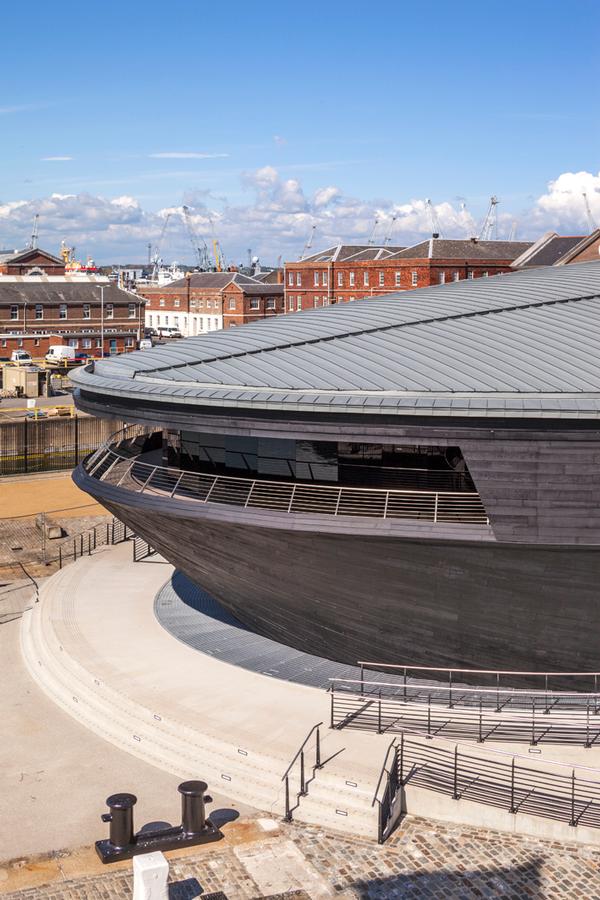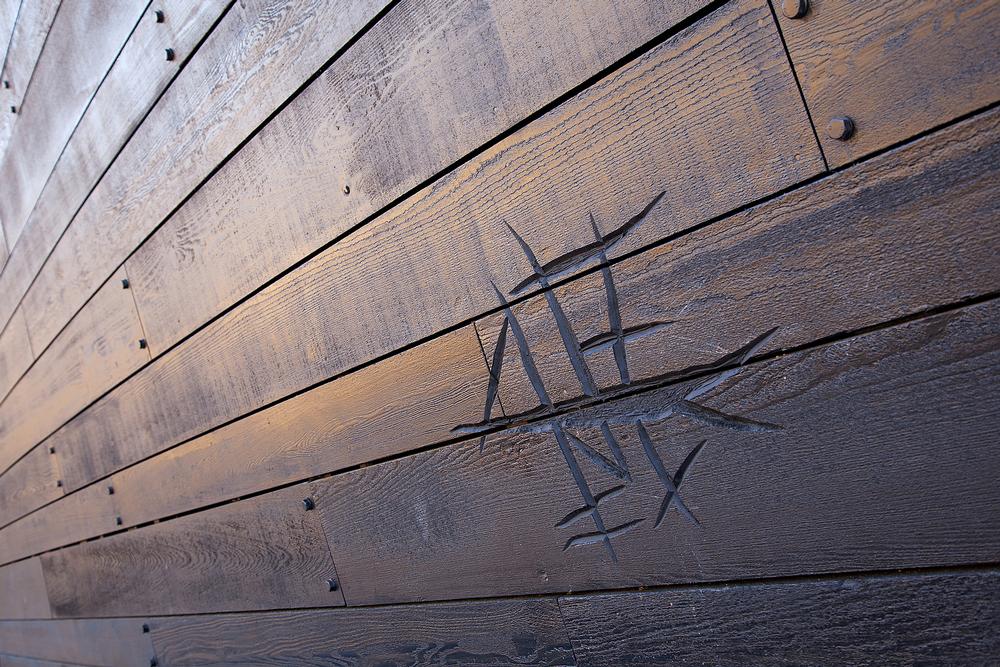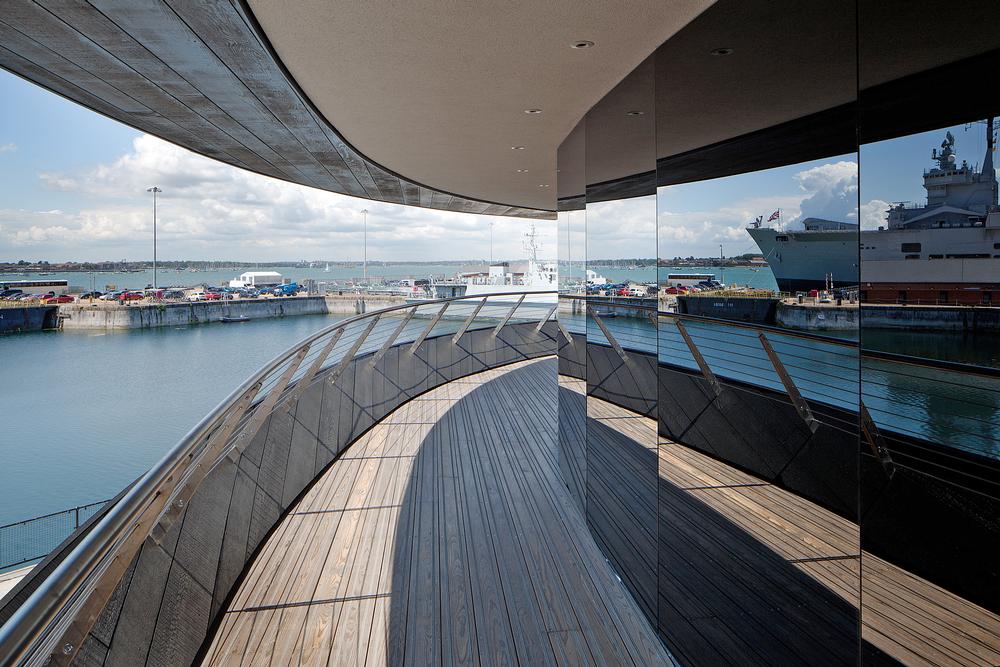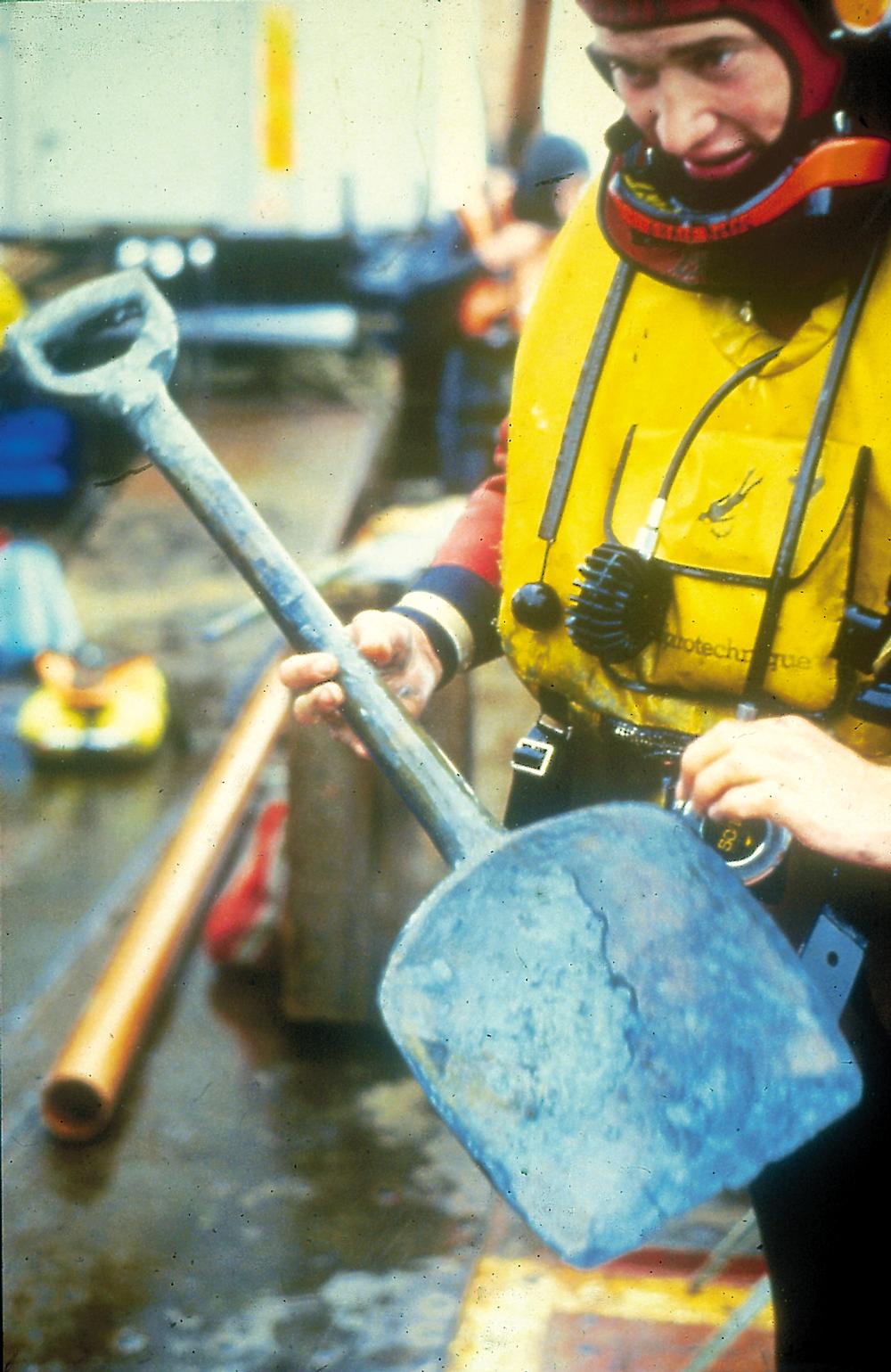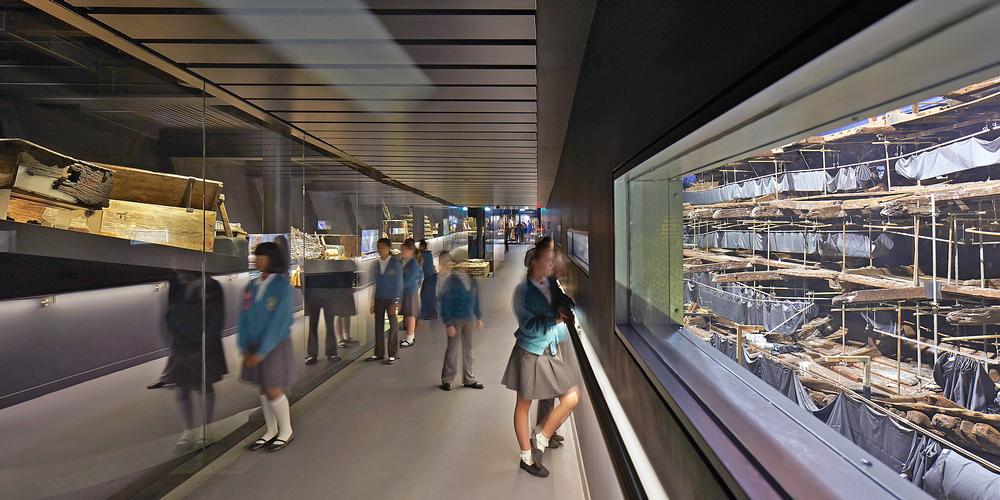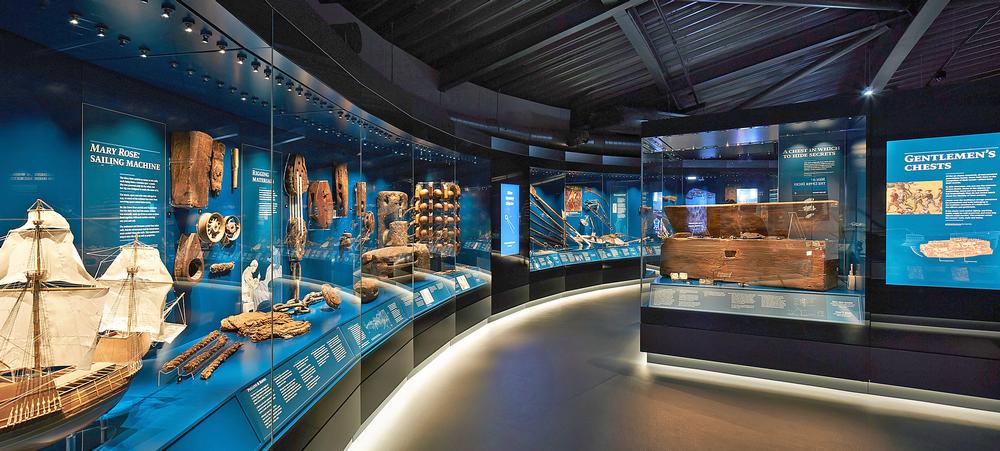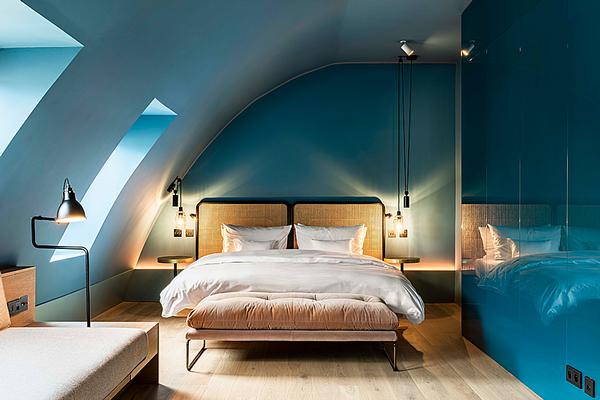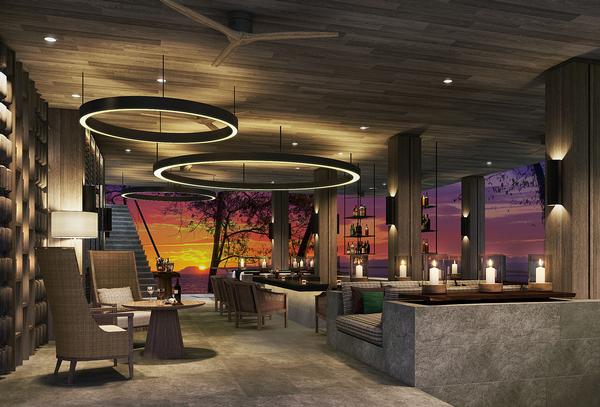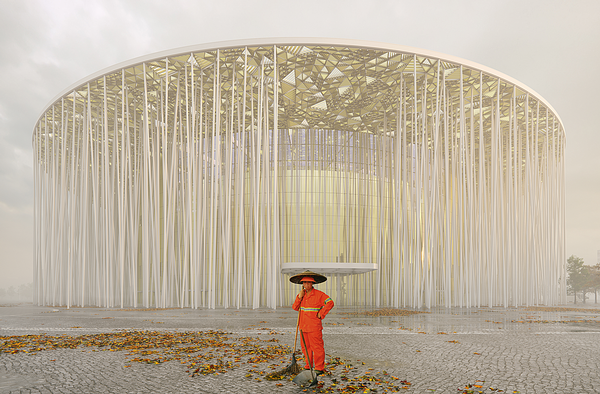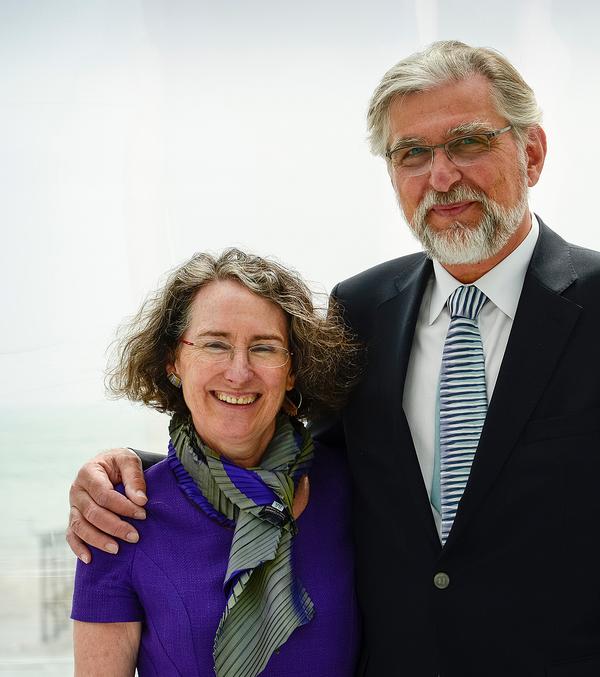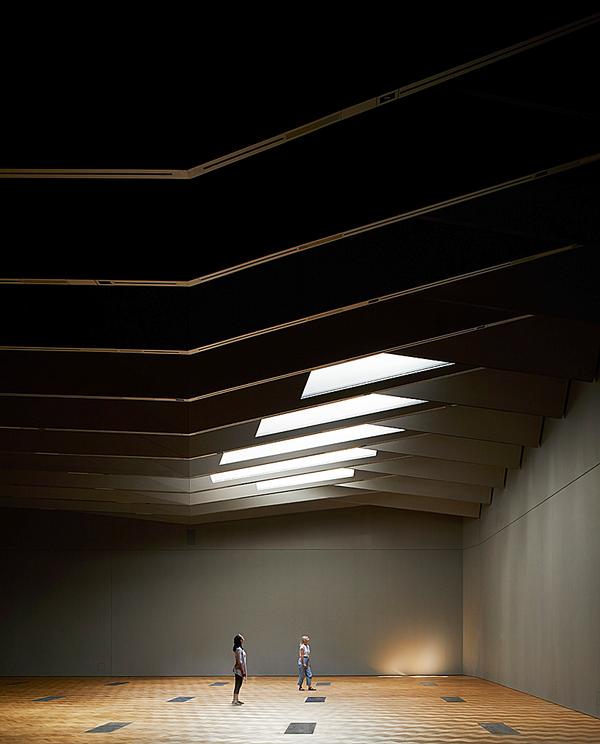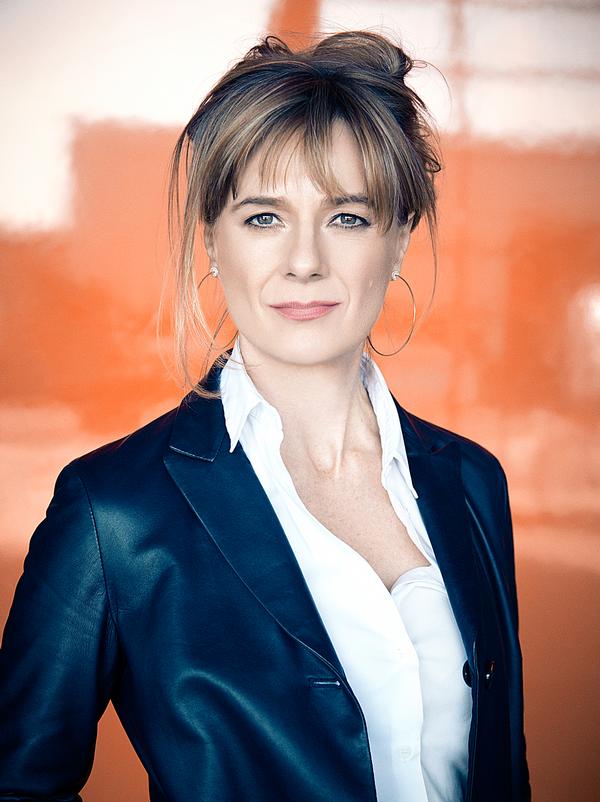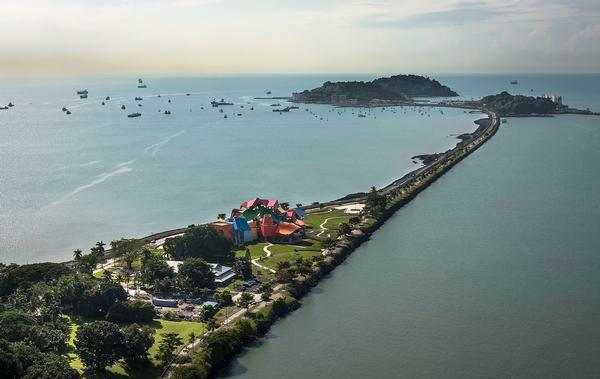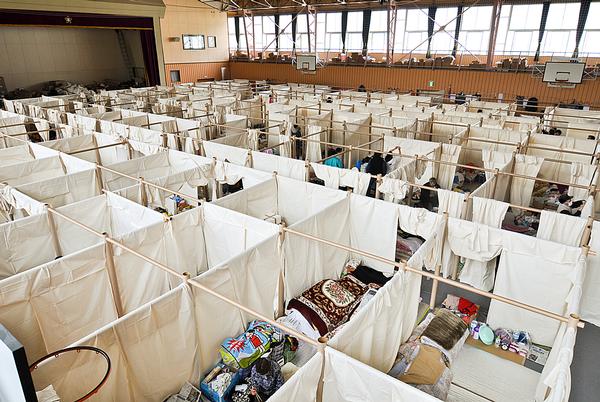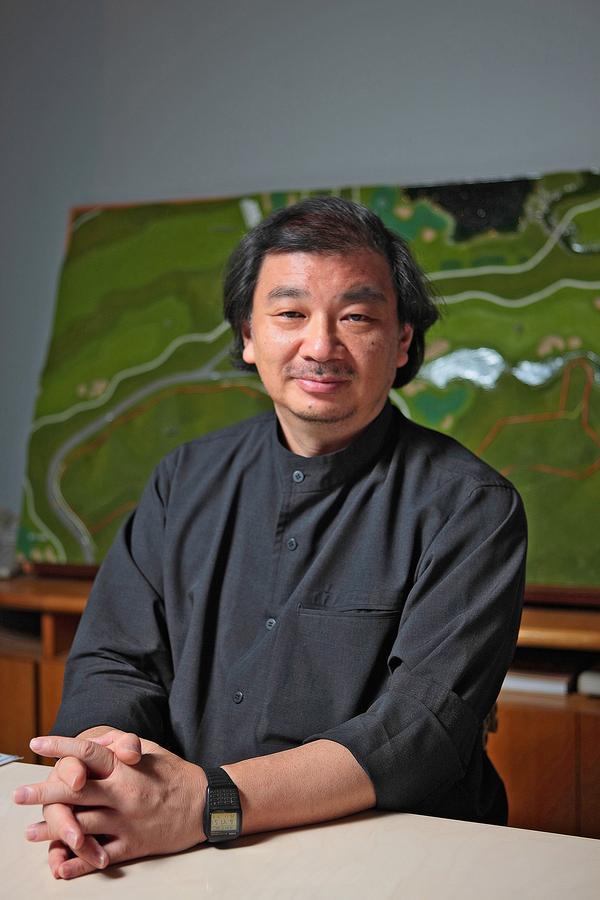Heritage
Mary Rose Museum
Henry VIII’s warship sank almost 500 years ago, was raised 30 years ago and is now on display with 12,000 artefacts. We talk to the people who made the museum happen
John Lippiett,
CEO,
Mary Rose Trust

What feedback has the Mary Rose Museum had?
It’s going remarkably well. We had 50,000 visitors in our first month and were thrilled to have had such a high media profile for the launch. On our opening day, the museum was trending number two in the world. We’ve already had many visitors from overseas and our TripAdvisor rating is nearing 90 per cent excellents and very goods.
How many visitors do you expect?
We were initially cautious, but can now predict more than half a million a year.
The museum has capacity for 600 people. The building’s built in and over the dry dock in which the Mary Rose sits, which is a constraint. We’ve got to manage our visitors and how they come through, so we’re selling timed tickets.
The planned dwell time is 90 minutes, but many are taking longer. This is positive because it shows they like it, and we’re working out how to manage this.
How did you raise the funds?
When I came here 10 years ago, the Trust was battling an overdraft, as the conservation was so expensive.
The only way out of the situation was to build a sustainable museum and complete the conservation.
There’s never been any central government funding, so we rely on fund raising and donations.
The project’s cost £35m (US$53.1m, E40.5m) – £27m ($41m, E31.3m) for the design, building and exhibitions and £8m ($12.1m, E9.3m) for the final conservation. The Heritage Lottery Fund gave a £23m ($35m, E26.7m) investment plus other grants totalling £9.5m ($14.4m, E11m) over the past 18 years.
Without this, there wouldn’t be a Mary Rose Museum, but it was fundamental to the wish of the nation to save this iconic ship and the artefacts within her and put them on display.
How will ongoing work be funded?
We’re undergoing a five-year drying process. The temperature and humidity in which we keep the ship and museum is tightly controlled and continues the conservation, which is expensive. Our education outreach programme also needs funding.
I hope through the income of tickets, the shop, café and hospitality events we’ll get close to the amount we need to continue to maintain that tight environment and look after everything.
I’m running a fundraising appeal for a permanent endowment to build up a sum of money, which can be kept to produce an income from the interest to fund any shortfalls in our annual expenditure and future projects.
What are you most proud of?
As well as having a museum that’s talked about as being remarkable, I’m proud of the outreach and educational package that we’ve put together, especially for the work we do for those with special needs.
We set out eight years ago to be the best for access, both going out to and bringing in to, special needs. We do an awful lot of work, which is extremely well appreciated.
What are the future plans?
I’ve got to prepare for the hot box removal in five years time. We’ll do the work over the winter when our visitor numbers are at their lowest, as the physical work of taking the walls and ceiling down means we’ll have to close for a couple of months.
When complete, it’ll revolutionise the museum again – instead of looking at the hull through glass windows, visitors will stand in the centre of the ship.
I’d like to see galleries both underneath and around the outboard side of the ship in the future. We’ll also start to put back the original walls, cabins and ladders. There’s more of the ship to go in, so it can be even better interpreted.
As well as looking after the ship and objects, the conservators are involved in research of new methods of conserving water-logged materials. We’re world leaders in this and can do it for others.
We’re also doing research in conservation and maritime archaeology. We’ve got a massive, 50-year-old archive – the Mary Rose is the world’s largest maritime excavation – which needs digitalising so it’s accessible to researchers.
The future is massive here. This isn’t the closing phase of our project – it’s opening a new chapter.
“It was fundamental to the wish of the nation to save this iconic ship and the artefacts within her and put them on display”
Chris Dobbs,
Diving Archaeologist and Head of Interpretation,
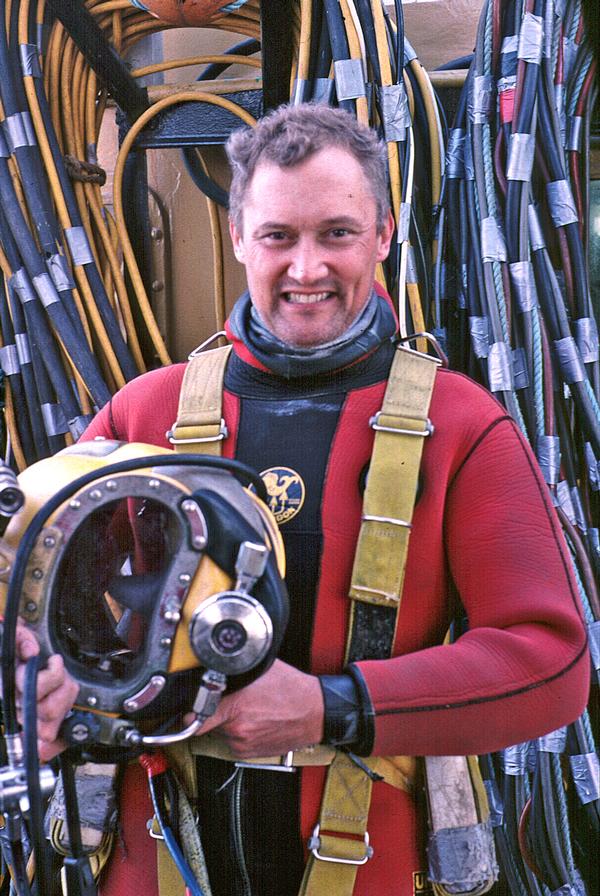
When did you get involved?
I studied archaeology at university, then specialised in maritime archaeology and learned to dive. I left university in 1979 when the Mary Rose Trust needed archaeologists who could dive to supervise the work. Very few people were qualified to do it – I was in the right place at the right time.
What was it like diving for the ship?
It was an amazing feeling to find things that no one else had seen for 500 years. There was a romanticism that on any dive you could find anything. There’s a real excitement in that and revealing the objects in the mud. It’s like opening Tutankhamun’s tomb – every day.
The diving was amazing, but the conditions weren’t good. The visibility in the River Solent is appalling, as it’s very silty. You can’t see very far, but it’s the silt in the water that built up inside the wreck to preserve the objects.
How long did it take?
The search for the Mary Rose, by British military historian Alexander Mckee, started in 1965 and the ship was found in 1971. Working with maritime archaeologist Margaret Rule, they spent seven years establishing how much was there and exposing all the way around the ship to prove it was in good condition and deserved a top class excavation.
The major diving, exposing the whole ship and emptying the contents was between 1978 and 1982, then the Mary Rose was raised on 11th October 1982.
What were the challenges?
There weren’t many experienced diving archaeologists at the time – we started with just six. So, we supervised and the work was done by 500 avocational divers. We’d go down at 6am and set up the site for the day, then the avocational divers would go down in waves.
Many techniques for underwater technology hadn’t yet been perfected. Our goal was to excavate the Mary Rose underwater to as high a standard as you could do on land. This meant adapting techniques that were used on land or inventing new ones.
What was your most memorable find?
One was a wooden shovel. It may seem banal that I should remember that, but it was so beautifully carved from just one piece of timber. It was an ordinary object that someone had used daily and it really resonated with me. I hope all our visitors have that connection with at least one item in the museum.
How did you feel when the Mary Rose was raised?
It was a great feeling of both relief and euphoria. Relief because it was October and there weren’t many more opportunities for the weather and the salvage barge, so we really needed to do it. Euphoria because it was something that a whole team of people had been working on for years and finally it was up.
The outside broadcast went to 60 million people worldwide. Nowadays you can reach many more with social media, but in 1982 that amount was stunning. It’s a moment that many people remember – it’s akin to watching the first people walking on the moon.
Has everything been recovered?
We excavated the whole of the ship and a small area around it, but the bow and forecastle area weren’t excavated. We returned for three short seasons of work between 2003 and 2005, which showed that there’s more structure and objects on the seabed, but we don’t have the time and resources to go back yet.
If it’s safe from degradation by biological or human means, it’s best to leave it there safely. It’s only if it’s under threat, or we have particular research questions we want to answer, that we’ll do major excavation. We regularly check that the silt’s still protecting what’s down there. It’s wonderful going down and I hope, one day, we’ll have the resources to bring the rest up.
How did you interpret the objects?
I was one of the team responsible for what we should display, where we should display it and what text to use to show that this isn’t just a warship with guns on it. It was a living ship in which hundreds of people set about their daily, working lives with their possessions.
We’ve got a cross section of society, from the officers’ pewterware and instruments, to the bowls and plates that the common man ate from.
Throughout the galleries are eight island cases, which focus on specific people, using chests we raised which were full of objects that belonged to them. These range from a Backgammon-type board with tiny die and a shaker, to nit combs – some of which have actual lice in them. It’s these objects that give us an idea of what someone was like, which is incredibly powerful. By displaying these collections in a personal way, we hope people will be able to relate to what life was like in 1545. There are still 7,000 artefacts that need conservation work, so we’ll be displaying more over time.
About the Mary Rose
Built in 1510, the Mary Rose was the flagship of King Henry VIII’s fleet. In 1545 the ship sank during the Battle of the Solent against a French invasion fleet. Only 35 of the 500 crew survived, most of them trapped under netting used to prevent enemies jumping aboard the ship.
In 1965 the late British military historian Alexander McKee began a search for the ship. The Mary Rose Trust was formed in 1979 and for the next four years, the ship’s contents were excavated, totally 19,000 artefacts. On 11th October 1982, the raising of the Mary Rose was watched by 60 million people worldwide.
The hull was towed into the dry dock which now houses the museum and the hull was sprayed continually with recyled, fresh water to stop the wood drying out. From 1994 to 2013 the hull was sprayed with Polythlene Glycol, a water-soluble wax.
On 31st May 2013, the Mary Rose Museum opened at Portsmouth Historic Dockyard, at the same location as she was first built. The final stage of the hull conservation involves fabric ducts directing dried air at exact temperatures across all parts of the hull. Approximately 100 tons of water needs to be removed and is expected to take five years.
My experience, Kathleen Whyman
Kathleen Whyman,
Managing Editor,
Attractions Management
Having watched the Mary Rose being raised as a child, on tv programme Blue Peter, the ship and the Tudor period have long held a fascination for me.
I was therefore eager to see the wreck at the Mary Rose Museum, but hadn’t, prior to my visit, appreciated the depth of knowledge it would provide about Tudor life or the variety and richness of objects on display.
The 12,000 artefacts on display include treasures such as gold coins, pewter dishes, compasses, long bows and musical instruments – some of which have altered history, as it wasn’t known that they existed in Tudor times.
While these are beautiful to look at, other objects made me stare in disbelief. How could the divers possibly have found a minute die that had been buried so deep beneath the sea? How could a medicine bottle still smell of menthol after 500 years? Were those really the discarded beef and pork bones from the men’s last supper? And, perhaps my favourite, a stack of fire wood – the only Tudor logs that exist because all others would have been thrown on the fire and burned.
The ship itself is magnificent. Walking between the hull and its mirror image, which so cleverly displays the objects where they would have been, I could picture the crew running around or going about their daily tasks. When the glass walls come down in five years, allowing visitors to stand alongside the ship without any interruption, the atmosphere will be even more charged.
The museum also reminds us that the sinking was a terrible loss of almost 500 lives. The crew’s screams could be heard from the shore as they struggled to escape from beneath the netting that had been placed over the deck to protect them from enemies boarding, but actually killed them.
The museum is a superb tribute to the men and boys who died and a wonderful insight into this period of time.
